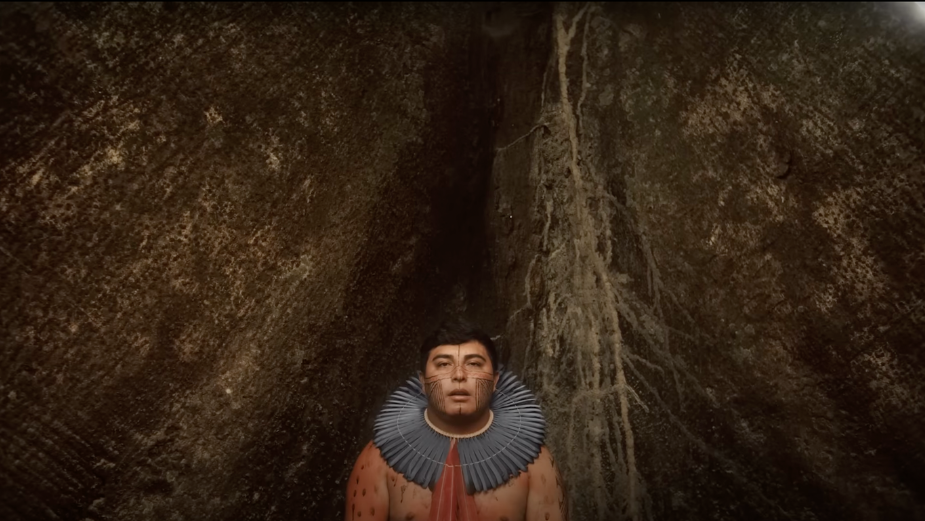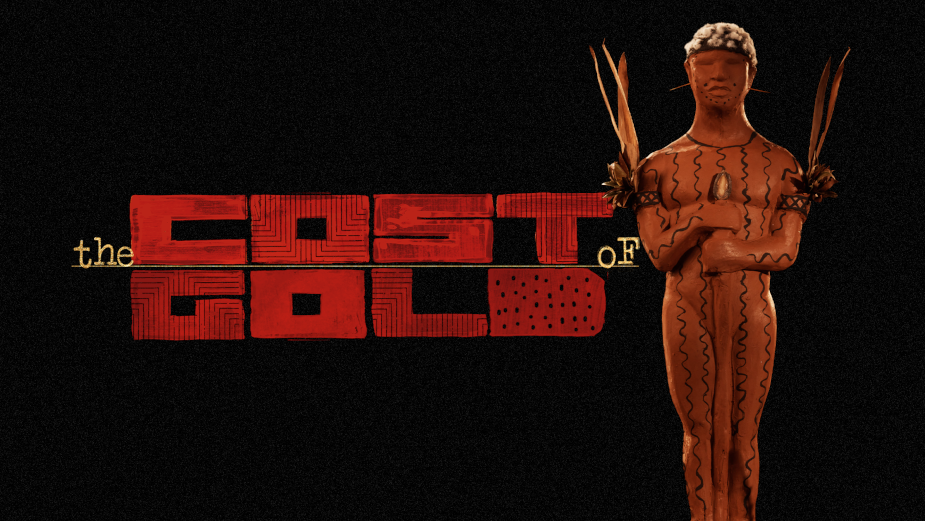
Asking If Oscar Nominees Know the Real Cost of Gold

The Yanomami are the largest indigenous group in the Amazon rainforest, and in recent years, illegal gold mining has intensified on their lands, leading to mercury contamination of rivers and fish, deforestation, and a strong social impact on the indigenous population. This has led to a humanitarian tragedy that, until recently, was largely ignored by the authorities as the Yanomami witnessed the destruction of their environment and - as one Yanomami leader tells LBB - the deaths and sexual abuse of its people.
Hoping to leverage the immense global attention on the Oscars this week, an organised Yanomami association called the URIHI partnered with Brazilian creative agency, and part of DDB Latina, DM9. With an artist who specialises in the region’s indigenous craft, they created alternate Oscar statues based on the Yanomami divinity Omama - importantly, not made from gold - and sent them to this year’s Oscar nominees.
An accompanying film, narrated by Junior Hekurari Yanomami, a leader of the URIHI, was also launched and sent to the nominees, including Angela Bassett, Jamie Lee Curtis, Stephanie Hsu, Brendan Gleeson, Barry Keoghan, Ke Huy Quan, Brendan Fraser, Colin Farrell, Austin Butler, Bill Nighy, Paul Mescal, Cate Blanchett, Ana de Armas and Michelle Yeoh. To raise awareness of the impacts of illegal mining on the Yanomami community, the film directs audiences to an online calculator where people can view ‘The Real Cost of Gold’ - measured in human life, deforestation levels and contamination data.
To see how this project came about and how the URIHI and DM9 are fighting back against the illegal gold extraction on the film industry’s biggest stage, LBB’s Ben Conway spoke with Junior and the creative agency’s executive creative director, Nina Lucato.
LBB> This campaign has several parts to it - the Omama statues, the website/calculator, and the film - what inspired this campaign surrounding the ‘real cost of gold’? When did you start planning and creating for it?
Nina> Illegal gold extraction became a topic in Brazil in the past couple of months after the media showcased pictures of the Yanomami people starving. It came to our attention that people are not aware that they are consumers of products that are directly causing it. As it was an urgent matter, we started creating the campaign in a fast mode, mid-February. So, it was all very quick.
Junior> The situation with our people is very, very serious. Giving interviews to local newspapers is not enough. We needed something bolder to get more people to pay attention to us… We want people to know that illegal gold is killing the Yanomami people and that we need them to help us fight it.
LBB> Where did the idea for the Omama statues come from? How did you get them made? And how will they get to the Oscar nominees?
Junior> Omama is the protector of the forest and of the Yanomami people. It's our most cherished divinity. We had an artist make it for us using ceramic and painted with natural urucum and jenipapo ink.
Nina> We wanted to create something that could easily become an international discussion. With the Oscars around the corner, it was a great opportunity to have this conversation on a global scale. The statues are being transported to LA and will be delivered to the winner's agents.
LBB> Junior, how have you seen gold mining affect the Yanomami people and the environment first-hand? What are some effects that people don’t know about?
Junior> Besides the destruction of our natural resources (polluted rivers with mercury, destroyed forests, land erosion) we are also facing a lot of violence. As we act to protect our territories, criminals use firearms against us to take over the land, causing deaths and even using sexual violence against our young girls.

LBB> And how is your association trying to prevent the illegal extraction of gold in the Amazon? How can people around the world help?
Junior> We are constantly calling the authorities, protesting, and writing reports to try to expose the situation. People around the world can help by stopping buying gold from unknown sources and by helping put pressure [on the government] to create better laws that can protect us from criminals.
LBB> The calculator on the website compares various gold objects to real-term costs (“4 people poisoned”, “126lb of fish contaminated”) - tell us about that and your design choices for the site!
Nina> The website is very simple and sends a very clear message. We chose to create a website that was practical and could support enough information for people to engage with the campaign at the same time. The numbers are an estimate, using the total weight of the gold extracted from the Amazon and its destruction reports, and the approximate weight of an object.

LBB> How do you hope to leverage the Oscars to shed light on this campaign and topic? What do you hope people will take away from watching the film?
Nina> We want powerful people to deliver this message to the world. We believe that if everyone knows the dangers involved in illegal gold mining, we can put pressure on the Brazilian government to act more intensely to expel criminals, create better laws and ultimately start a cultural shift towards the use of gold in our society.
LBB> What part of this project gave you the most creative fulfilment? And equally, what provided the most difficult creative challenge? How did you overcome it?
Junior> The response to this campaign was better than I could hope for. I was very pleased to see so many people engaged. For me, it was difficult to perform in front of the camera because I'm not a speechmaker or an actor. But I saw the relevance of the project and it gave me the strength to do my best.
Nina> Being in the presence of indigenous people and getting a real sense of what's going on in their land was definitely mind-blowing. Being able to translate their situation into a creative idea that could potentially help them was very exciting. Time was surely the biggest challenge because we needed everything ready to go before the Oscars, so we had an intense couple of weeks. However, there were so many people emotionally involved in the project (creatives, filmmakers, photographers, artists, etc) that everything was created and produced with enormous satisfaction.
LBB> What does the future hold for this project? If the Oscar nominees get involved, what does the next step of the campaign look like?
Nina> We won't stop with the Oscars. This is a long-term campaign that can virtually use any cultural manifestation to get people to listen, from fashion to music and even sports events. This is just the beginning.
Junior> We want to keep going until there are no more illegal miners on our land and our people can have peace and dignity. We will keep fighting and we will have more campaigns if it's necessary.













